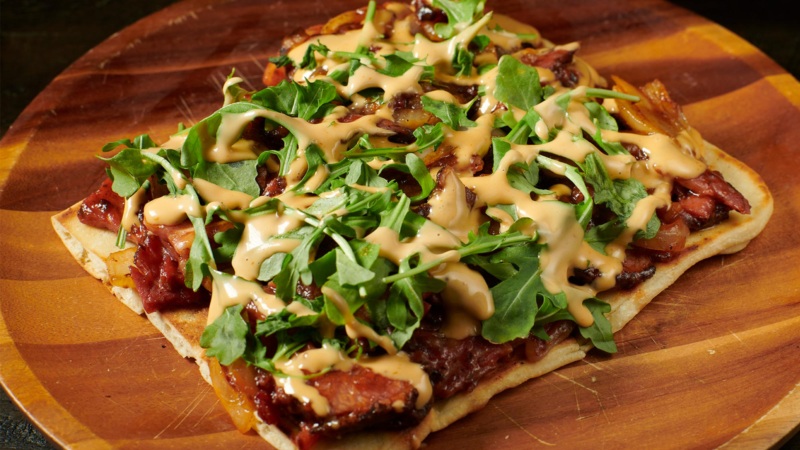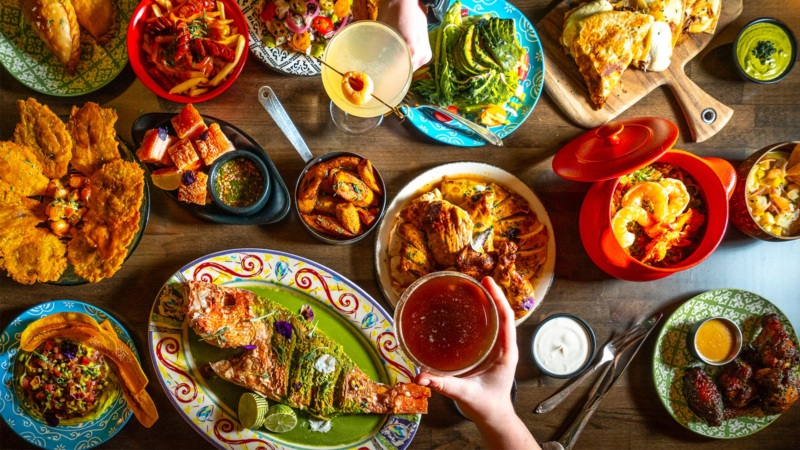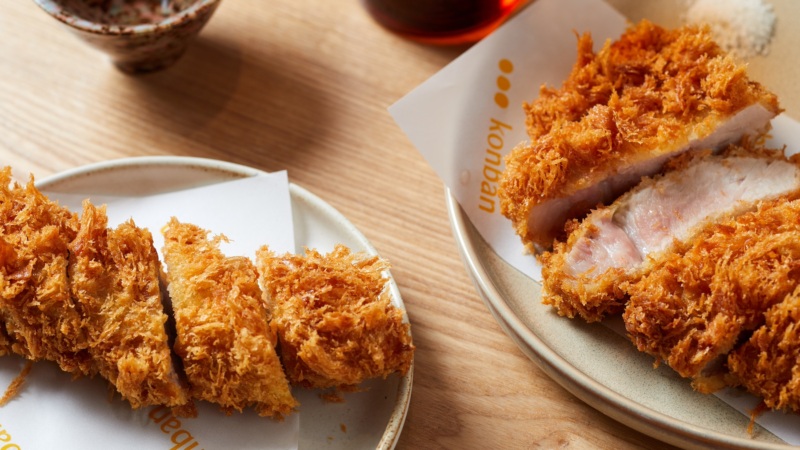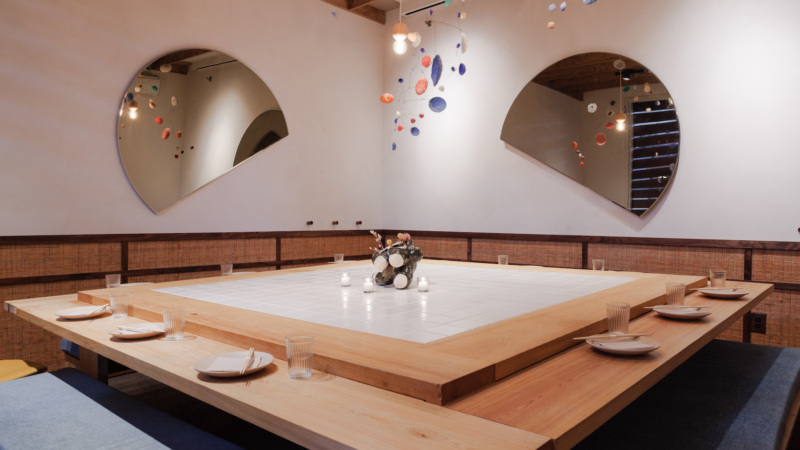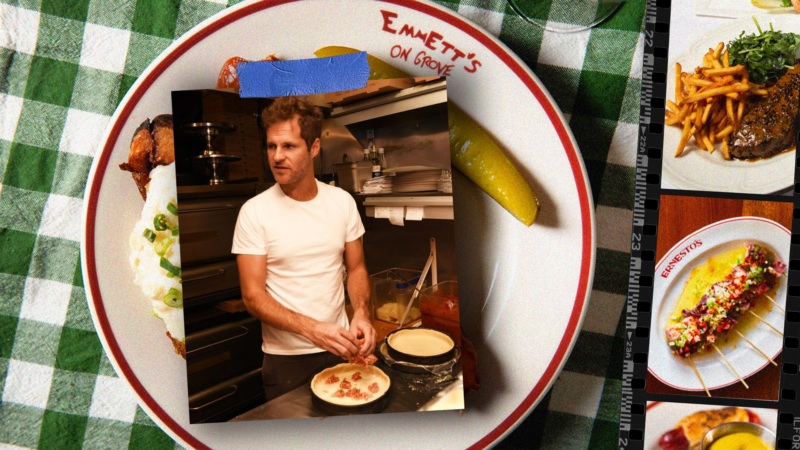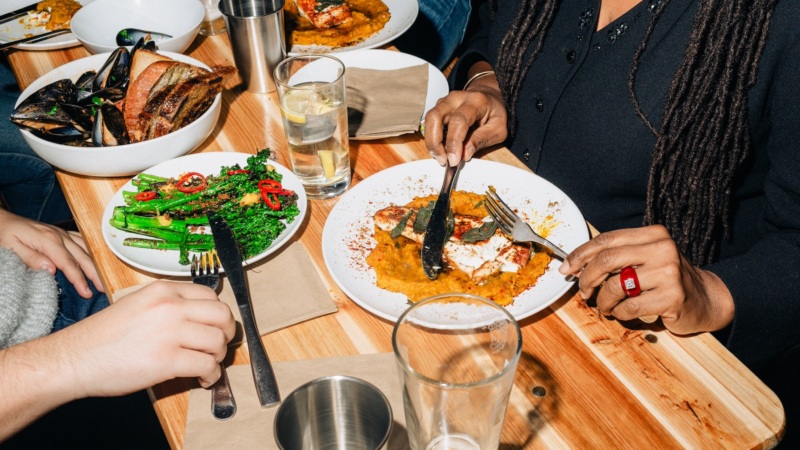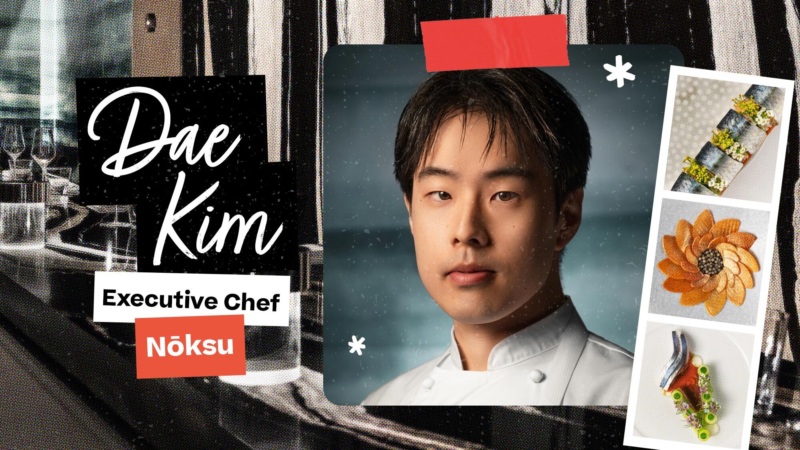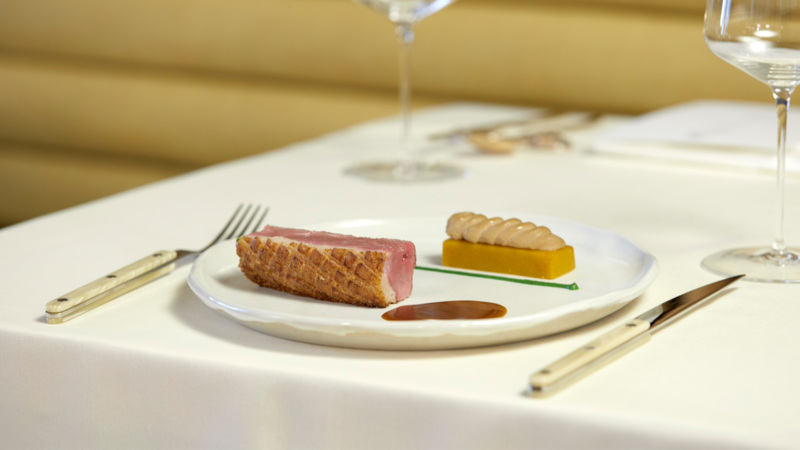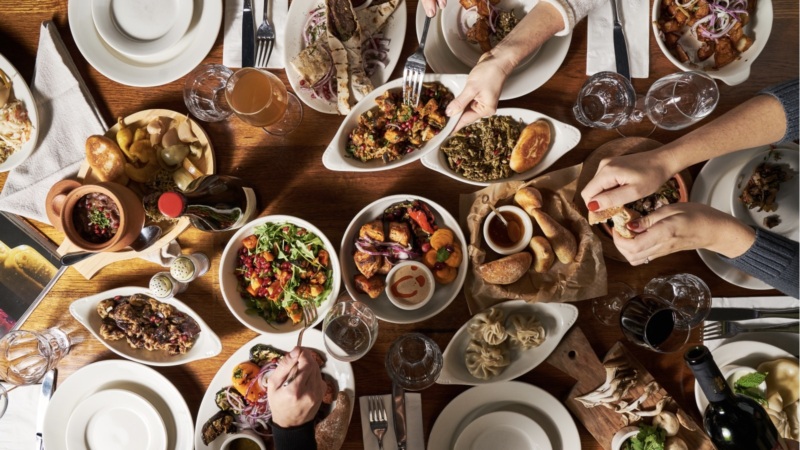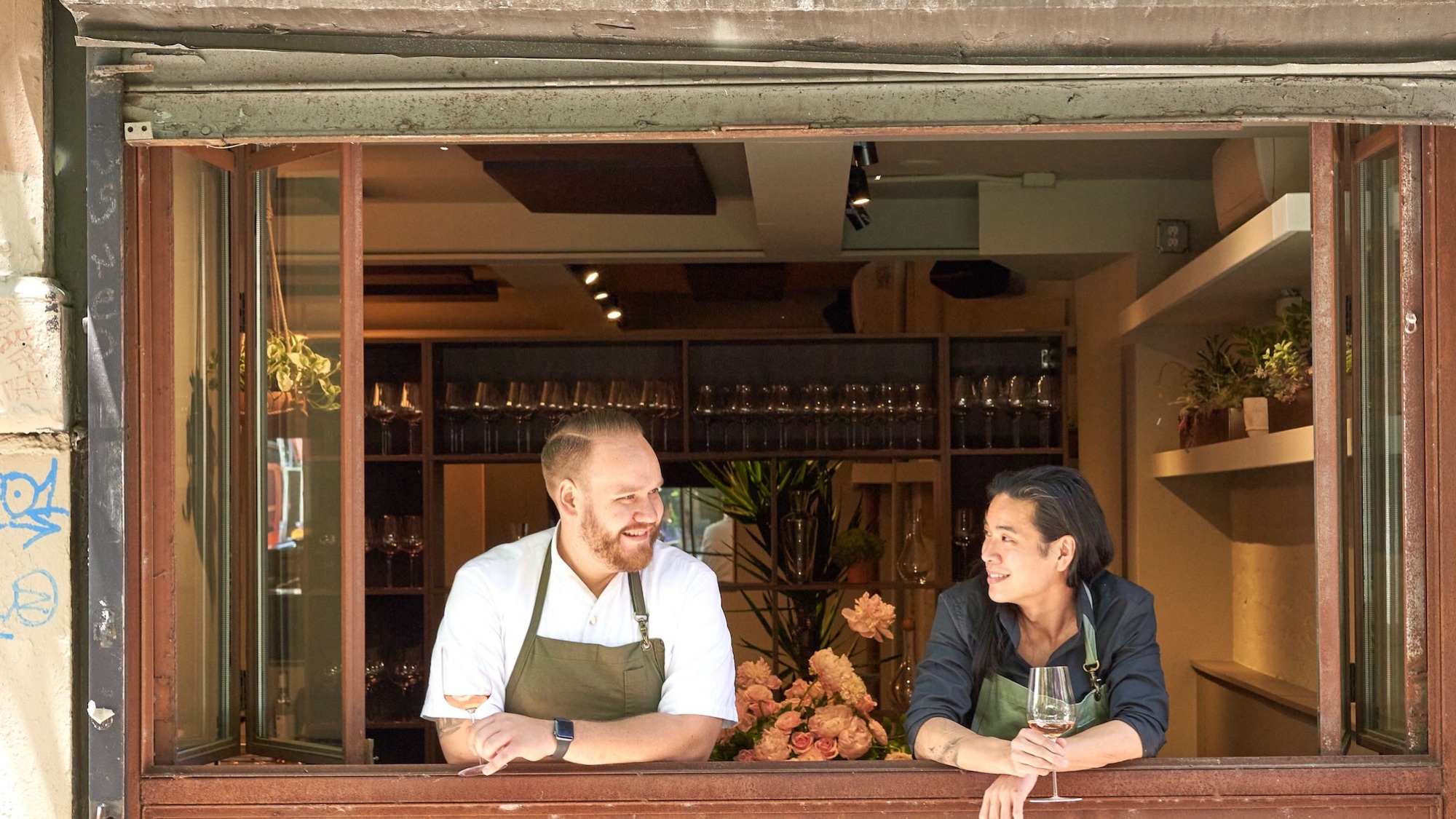
Samuel Clonts and Ray Trinh’s Accessible Fine Dining at Sixty Three Clinton, As Seen Through Five Dishes
Samuel Clonts and Raymond Trinh go way back. The two met as high schoolers in Arizona, working together at the restaurant in the Ritz-Carlton Dove Mountain, north of Tucson, before moving to New York where they became colleagues (and, for a period, roommates) at Chef’s Table at Brooklyn Fare and Bar Uchū. It was at Bar Uchū that the duo had their breakout moment, earning a Michelin star in 2017 with Clonts as executive chef, running the eight-seat kaiseki bar, and Trinh as team captain.
Now, the friends are striking out on their own with Sixty Three Clinton, a New American concept that opened in mid-July. “We were happy working in other people’s restaurants, but it came to a point where we decided that we needed to be the owners and have final say on every detail,” Clonts says.
After nearly signing a 10-year lease right before the pandemic hit New York, they ended up taking over the former Lower East Side outpost of Brooklyn pizzeria Speedy Romeo, a 100-year-old, 60-seat space where the wood-burning oven and grill “really drove the inspiration for the menu,” Clonts says.
While the restaurant’s focus is a seven-course tasting menu, which draws on the duo’s experience in Japanese restaurants, as well as Italian and French cooking and southwest influences from their Arizona upbringings, it clocks in at a relatively reasonable $92 per person. “We’re trying to do a fine dining approach, but make it more casual, more friendly, and more comfortable,” Clonts says. “It’s not a white tablecloth kind of place.”
There’s also bar and chef’s counter seating where guests can order off an à la carte menu that includes a caviar hand roll, a Bar Uchū favorite.
“Somebody asked, ‘What is your goal for this restaurant? Are you looking for Michelin stars? Times stars?’” Trinh says. “Of course, they never hurt, but we want to stay relevant and —” and Clonts cuts in as they both say in unison, “we want to be here in 10 years.”
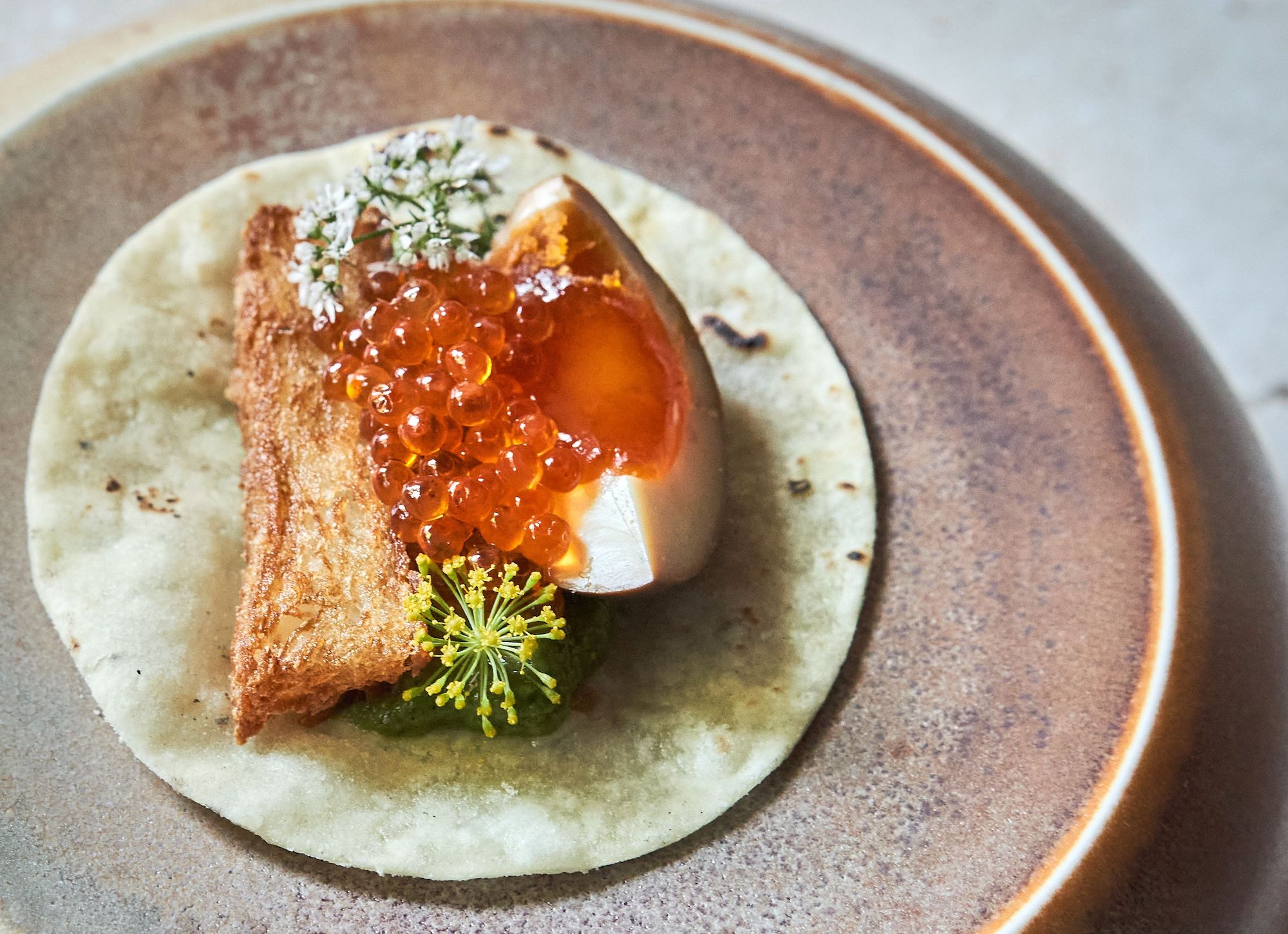
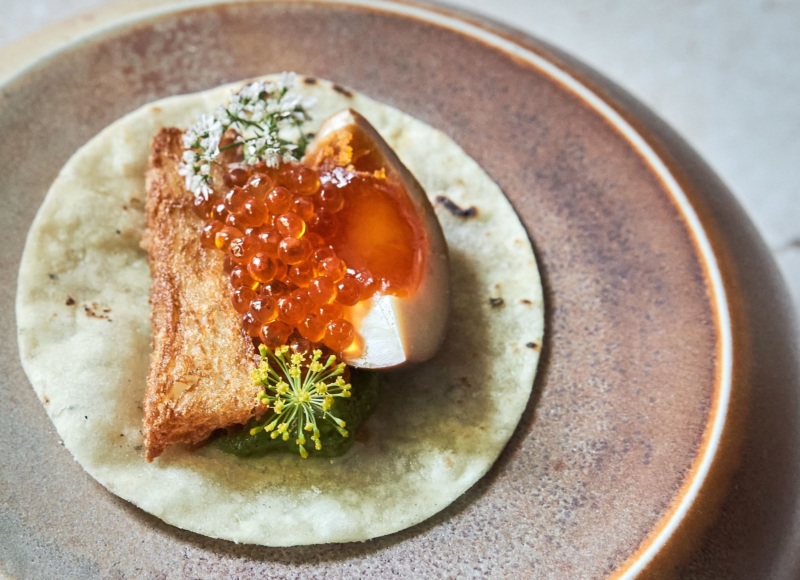
Breakfast Taco
(Ajitama, salsa verde, trout roe)
Clonts: “It’s housemade flour tortillas, it has ajitama, which is a Japanese marinated egg, salsa verde, and smoked trout roe. We wanted to tell a story about ourselves and our backgrounds and what we’re trying to do here. And start the meal off with something a little lighter, almost a little whimsical.”
Trinh: “It’s really refined. The eggs are Jidori eggs with beautiful, vibrant yolks. The trout roe is subtly smoked, but when you taste it, the crunch, and the pop, and the texture all comes together. I think it’s also very fitting for us, because we’re not stuffy as a restaurant. This just speaks just what we’re doing here. It could be a simple dish, but it’s going to be incredibly fun.”
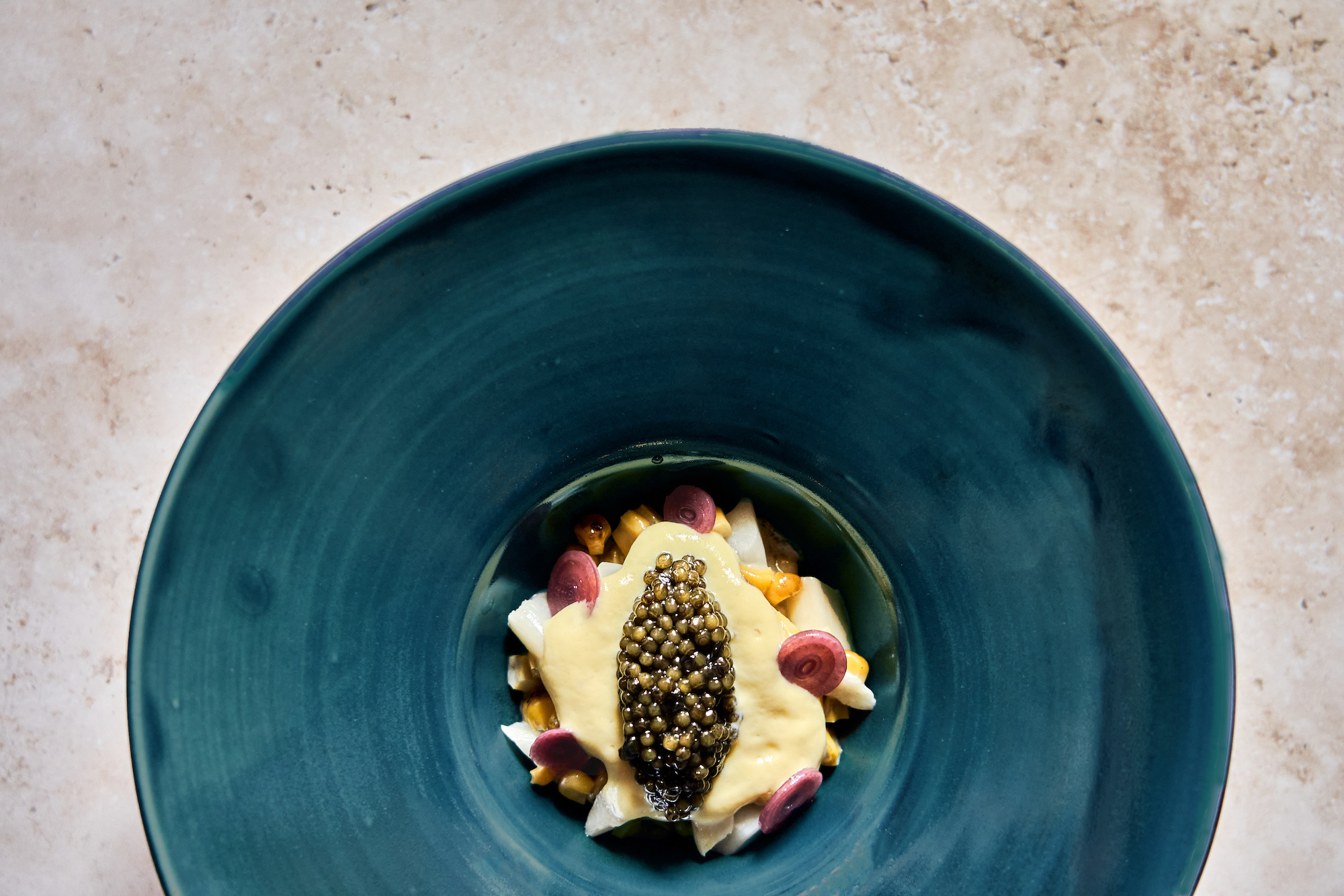

Smoked Corn
(Corn, razor clams, caviar)
Clonts: “We’re big fans of caviar, so we wanted to do a dish highlighting that. We’re using [Jersey] corn, smoking it in the wood oven, and combining it with white asparagus — we’re still getting the spring white asparagus from Holland — and mixing that with some razor clams. It’s cooked in a cream sauce that we make from the razor clams as well. It’s not quite like a clam chowder — it’s a little bit more refined than that — but it’s the same flavors.”
Trinh: “Sam does a great job with balance. There’s always textural balance, whether it’s creamy or crunchy, or adding some kind of element that can help break it up. Sometimes even temperature balance — especially [in this dish], having nice, warm corn pudding at the bottom with the razor clams and white asparagus, but then the textural and temperature difference of having the caviar on top. The composition is awesome, too. It’s a bright yellow pop on that plate, with pickled red pearl onions in there that are just vibrant.”
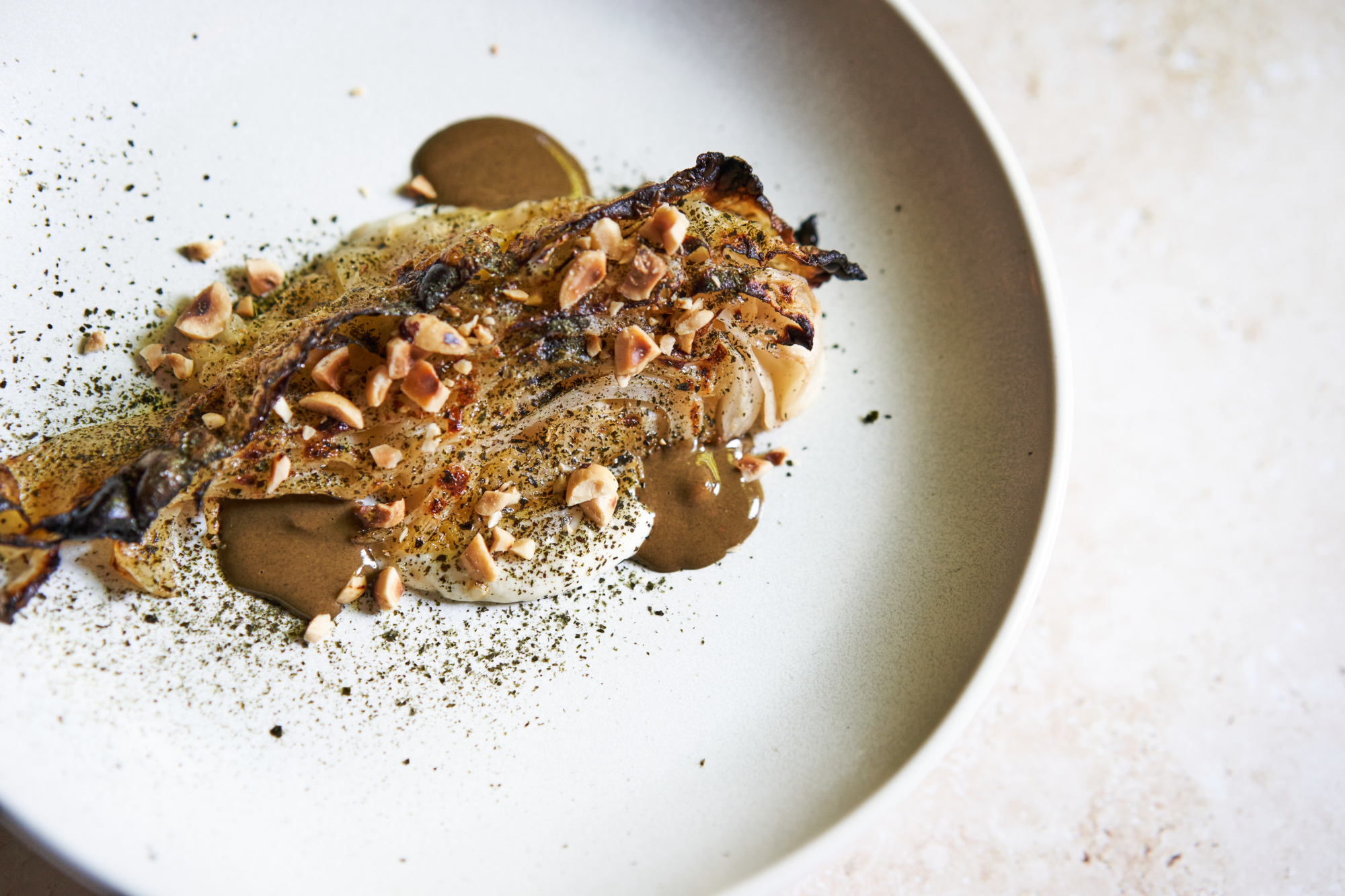
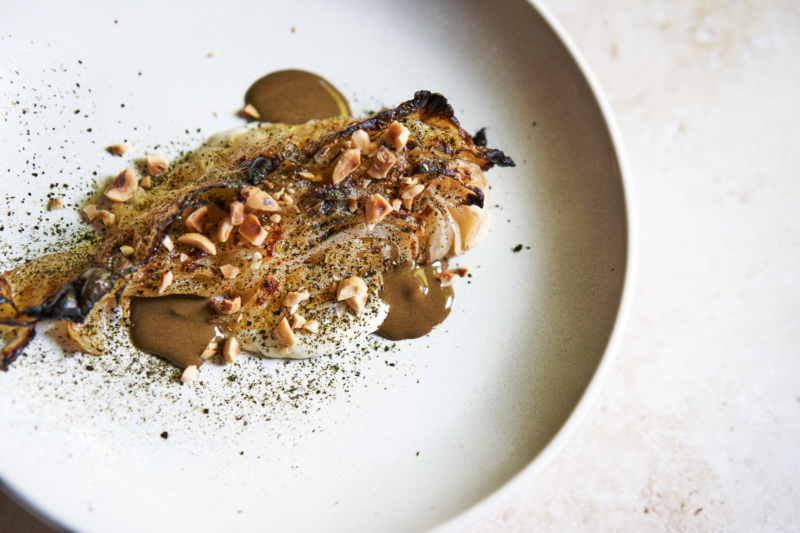
Caraflex Cabbage
(Comté, nori, hazelnuts)
Trinh: “I think the cabbage is also one of our underdog dishes. It’s Caraflex cabbage, or arrowhead cabbage, from upstate New York, which is one of the sweeter cabbage varieties. It’s cone-shaped, so it’s kind of unique. And it’s served with Comté, nori, and hazelnuts. Sam kind of brines [the cabbage] a little bit, pickles it for a couple days. And then in between the layers of the cabbage, he puts Comté cheese and pickled onions to help break through some of that richness. There’s also nori powder and a nori puree in there, which just adds a complexity of vegetal flavors that you never knew would go together well. It’s a mixture of almost Nordic, kind of French, and Japanese cuisine. It’s really a beautiful harmony between all three.”
Clonts: “It’s served like a wedge cut out of a whole head, with the layers of Comté inside.”
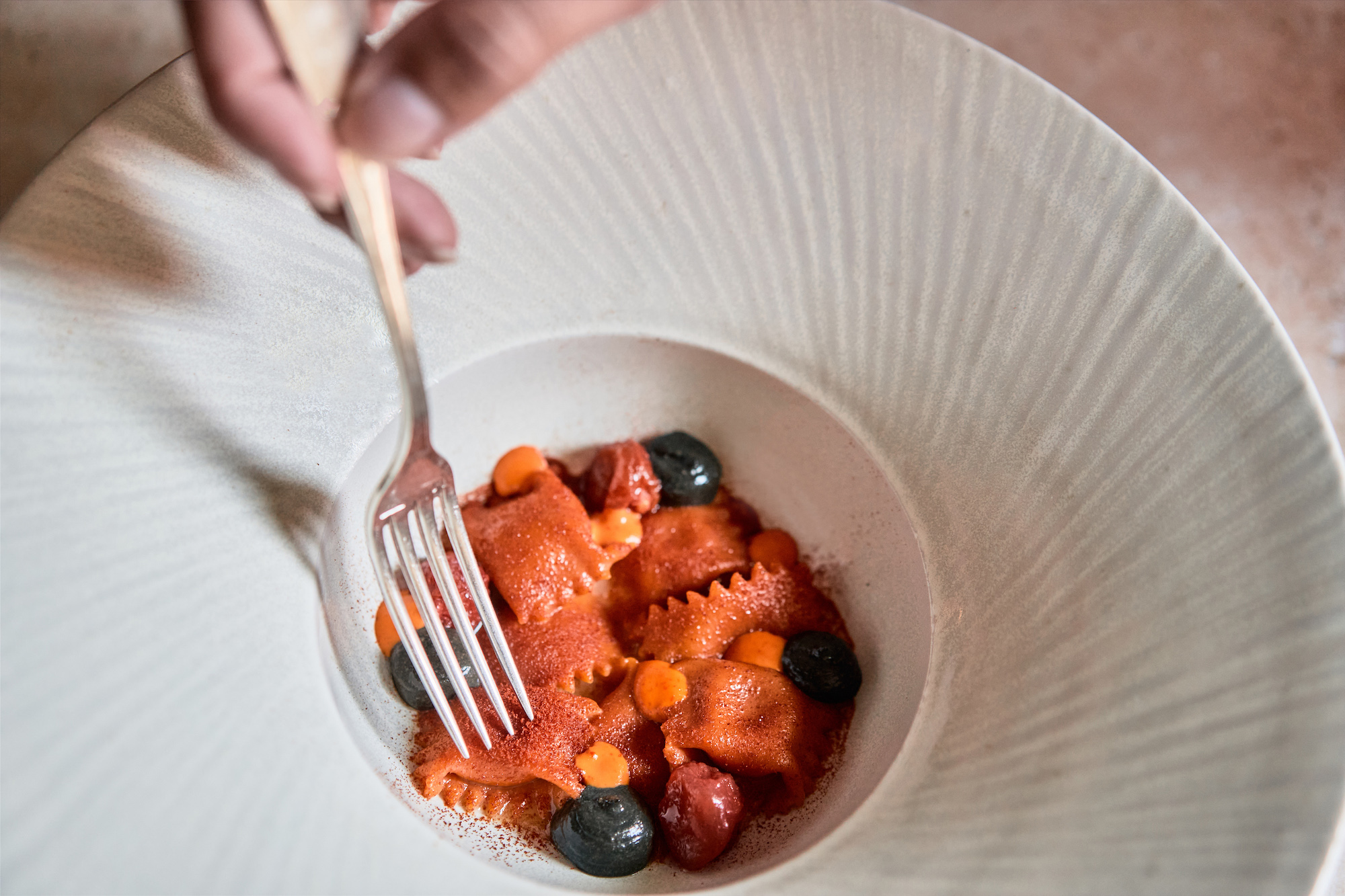
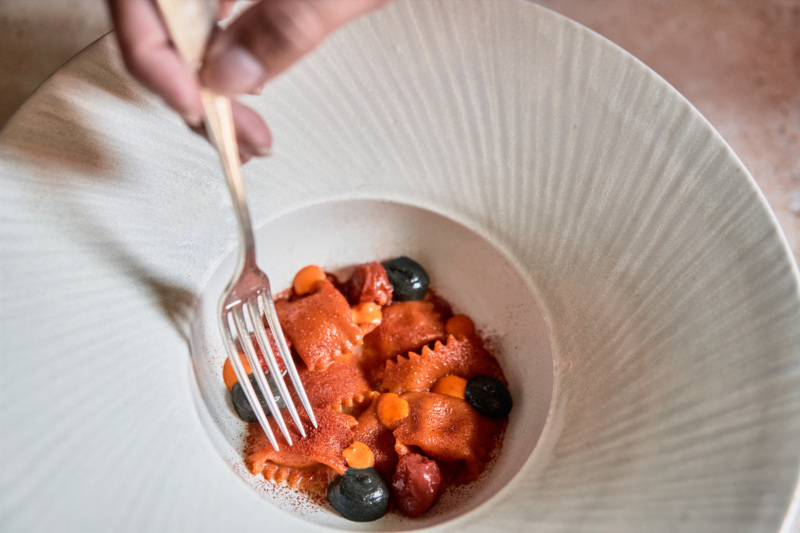
Roasted Tomato Agnolotti
(Black garlic ricotta, Calabrian chile)
Clonts: “I’ve always loved making and cooking pasta, so I wanted to do some kind of pasta dish. Going into summer I wanted to highlight tomatoes, but not make just a red sauce with pasta. So we get small cherry tomatoes [from New Jersey], peel them, and halfway dehydrate them in the oven. And then we turn that into the filling for the agnolotti. So you eat it and you get this burst of bright, sweet tomato inside. And then it’s served with a black garlic ricotta, and a little bit of Calabrian chile just for a little little kick of spice.”
Trinh: “When you think of a tomato pasta, right away you’re thinking red sauce. And again, what Sam did was really clever, having super bright flavors pop out without offering a red sauce.”

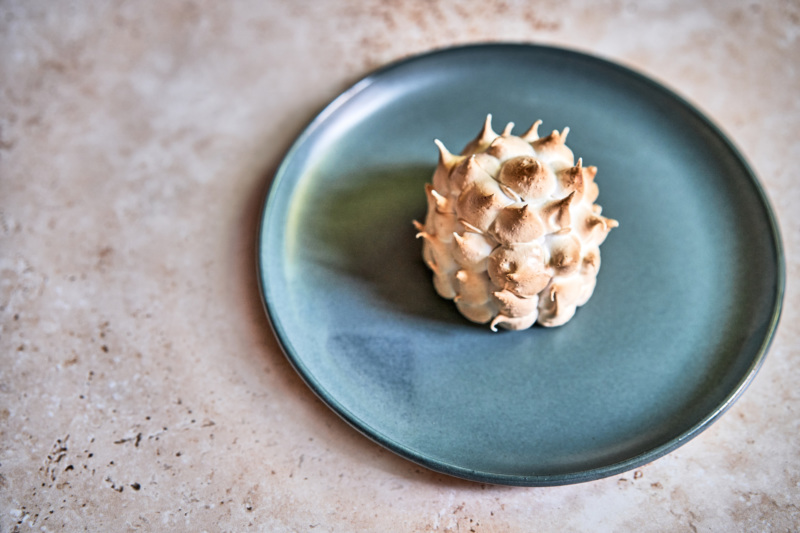
Baked Alaska
(Strawberry, yuzu)
Clonts: “It’s a mini Baked Alaska, individual-sized. Right now we’re doing strawberry sorbet on the inside. The crust is like a thin shortbread crust with a little bit of yuzu curd, balanced against the strawberry. That’s covered in meringue and it gets cooked in the wood oven, which is running at 700 to 800 degrees all night. And doing that really creates this beautiful shell from the meringue, which creates a whole experience when you crack into it. The goal was to find a dessert that highlighted the kitchen, and the equipment that we have. We were trying to find a dessert that could be baked that leaves some kind of impression.”
Trinh: “Talking about balance, there’s the sweetness and the acidity from the yuzu in there, and the temperature difference from the warm, marshmallowy meringue that creates a crust when you put it in the wood-fired oven. A lot of Baked Alaskas get blow-torched to caramelize and brown the outside, but you can’t necessarily achieve that crust without baking it in a really hot oven.”
Lauren Vespoli is a New York-based freelance journalist who has contributed to The New York Times, Vox, Atlas Obscura, and more. Follow her on Twitter. Follow Resy, too.


